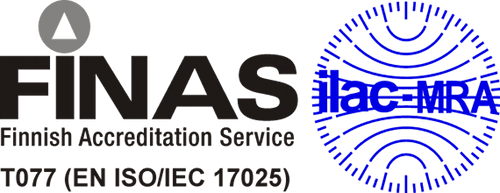PFASs
The method is primarily used in collaborative research projects, and other analytical services are agreed on a case by case basis. Written requests and contacts:
Environmental pollutant analysis
Accreditation
- The method is accredited with a flexible scope for perfluoroalkyl sulfonates and perfluoroalkyl carboxylic acids from serum and fish
Number of samples
- Also for single samples
Matrices
- Serum, breast milk and other human samples
- Food
- Soil, sediment and other environmental samples
- Water
Method description
- Samples are pretreated enzymatically if needed. Analytes are extracted with an organic solvent. The quantification is performed with a liquid chromatograph coupled to a triple quadrupole mass spectrometer (LC-MS/MS).
Limit of quantification
- 0.2–1.5 ng/ml (serum and other liquid samples)
- 0.2–1.5 ng/g fresh weight (solid samples)
Sampling instructions
- Sample container: polypropylene (PP) or polyethene (PE)
- Minimum sample amount: serum 0.2 ml, breast milk 10 ml, water 50 ml, other samples 2 g
- Maximum storage time: -18°C for 12 months, -70°C or in liquid nitrogen for at least 20 years
- See also the general sampling instructions that apply to all analyses:
Environmental pollutant analysis
Dispatch
- Cold package
Analytes
Perfluoroalkyl sulfonic acids
- PFHxS
- PFHpS
- PFOS
- PFDS
Perfluoroalkyl carboxylic acids
- PFHxA
- PFHpA
- PFOA
- PFNA
- PFDA
- PFUnA
- PFDoA
- PFTrA
- PFTA
Perfluorooctanesulfonamide and its derivatives (not accredited)
- FOSA
- MeFOSAA
- EtFOSAA
The unit is a FINAS accredited testing laboratory T077. It has been accredited according to the standard SFS-EN ISO/IEC 17025:2005 and its scope of accreditation is available on the website of FINAS (Finnish Accreditation Service).
The work order must be included in the shipment of samples along with an itemized sample list, if needed.
Work order for environmental pollutant analyses (PDF 132 KB)





